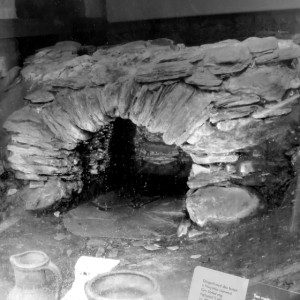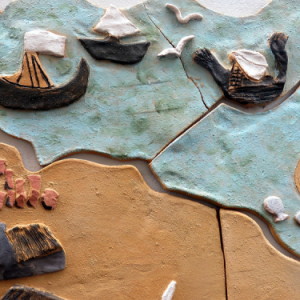Shards of history
Almost a hundred years ago builders in the little seaside town of Trefdraeth/Newport stumbled upon the remains of two ancient pot kilns. The celebrated archaeologist Sir Mortimer Wheeler and others were consulted and the kilns were pronounced to be remarkable and nigh-unique antiquities dating from the late15th/early16th centuries.
The kilns were preserved untouched until such time as money and energy could bring them back into public view. And now it has. One kiln had to be sacrificed to rescue the other but great care has been devoted to making the most of what remains. The whole community has been involved in reconstructing, in a variety of forms, what was once a essential community resource. Using local materials (clay, water, stone, gorse for fuel) a family of potters would have devoted 5 days at a time to each firing. Unfired pots would be close-packed within the kiln before the huge chimney-like firebox above (which does not survive) was packed with gorse sheaves gathered on the mountain above. The internal heat would reach an intense temperature and would have to be carefully managed before gradual cooling. The pots that emerged would have been sold in local fairs and traded further afield by boat from the town's harbour.
The kiln (first extra) is behind glass but there are visual and auditory explanations of how it worked and how it affected the lively, busy mediaeval community of Trefdraeth with its castle, its harbour and the revered Carn Ingli mountain that overshadows it. Bringing the kiln and its times back to life has been another community enterprise that people of all ages have engaged with. Extras show the bas-relief clay panel, made by the school children, that depicts the kiln within the historical life and landscape of the town.
"Worth a detour" if you're in West Wales.
Look here if you want to find out more about it.



Comments
Sign in or get an account to comment.


